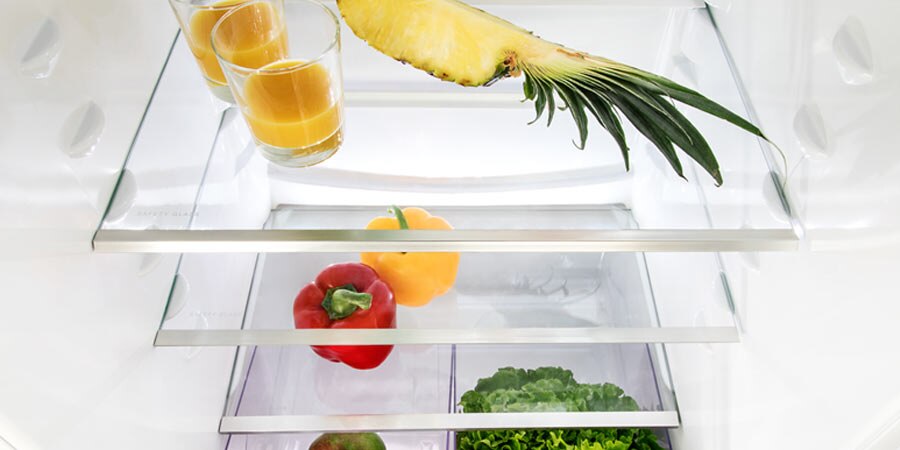
Using recycled materials has obvious environmental benefits, and we are increasingly replacing virgin materials in our products and packaging. New eco-friendly materials are becoming available, and we created the first-ever prototype fridge made of bioplastics.
After the product use phase, appliance raw materials have the largest lifecycle environmental impact. By replacing virgin materials with recycled ones, we significantly reduce environmental impact and promote a more closed resource loop. Producing the plastic we use in our products generates CO2 emissions equivalent to the emissions from our operations and transport activities combined. In other words, we can make a significant contribution to reducing resource use and tackling climate change by increasing the amount of high-quality recycled plastic in our products.
By 2020, we want to increase the volume of recycled plastic to 20,000 tonnes annually. In 2017, we used 15 times more recycled plastic than in 2011, which is when our reporting in this area started.
Recycled plastic is currently being used in vacuum cleaners and white goods. In 2008, we launched our first green vacuum cleaner made from recycled plastic, and ever since then we have had a number of green vacs on the market. The latest one to hit the shelves is the Pure D9, which is made from 70% recycled plastic and boasts an energy efficiency of A+++.
Looking at sheer volumes, steel is the material we use the most and is a significant source of CO2 emissions. By shifting our supply from steel made from iron ore to scrap-based steel, we can significantly reduce our carbon footprint from materials.
Electrolux has increased the amount of recycled steel from 7% in 2013 to 30% in 2017, which has reduced the average annual carbon emissions per tonne of steel from 2.1 to 1.6 tonnes of CO2, and the annual CO2 emissions by 256,000 tonnes. The accumulated CO2 reduction from using recycled steel rather than ore-based steel from 2013 up until 2017 is 1,084,000 tonnes of CO2 emissions.
Our packaging is also going green. To improve the sustainability of packaging and emphasize the sustainable focus of the Electrolux Green Range of vacuum cleaners, the Visual Communication Design team within Home Care & SDA decided to use 88% recycled cardboard for the packaging.
Sustainability of the packaging was further enhanced by going from an oil-based four-color print to a watercolor ink, only using two colors on the packaging. Changing ink usage and printing on cardboard reduced the CO2 footprint by 12%, which make the products greener in all aspects.

Since a couple of years, we are exploring and testing how bioplastics can be applied in our products and packaging. Unlike ordinary plastics that are oil-based, bioplastics are made from corn, sugarcane and cellulose sources or from waste and by-products from the agriculture, forest and food industries. The bioplastics we use can, depending on type either be recycled like conventional plastics or decomposed in industrial composting.
Electrolux has now developed the first prototype of a refrigerator with all visible plastic parts made from bioplastics, specifically polylactic acid, a biobased thermoplastic polyester that is widely used in food packaging materials and disposables.
This case study is related to our promise Make better use of resources.